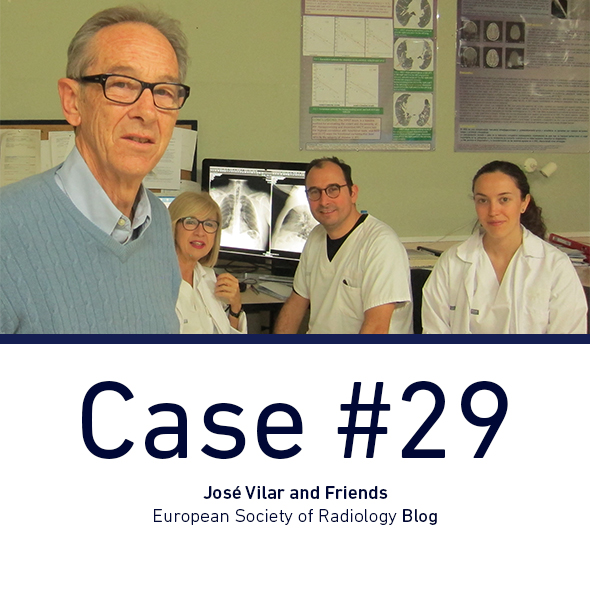
Dear Friends,
Good day to everybody. I hope that, wherever you are, you and your close ones are well. We are living hard times that will pass, but meanwhile, and probably more than ever, we need to stick to our lives in every sense, including our Radiology knowledge.
Keep on friends.
This a case from my own collection. Despite time passing there is, as in most cases a teaching to be extracted from it.
57 year old male with fever. He recently had neck surgery.
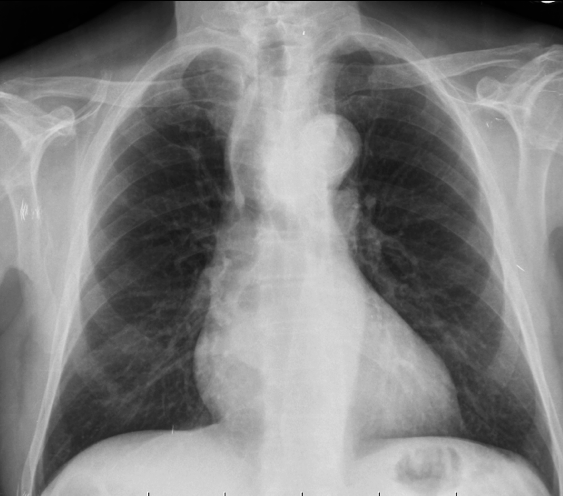
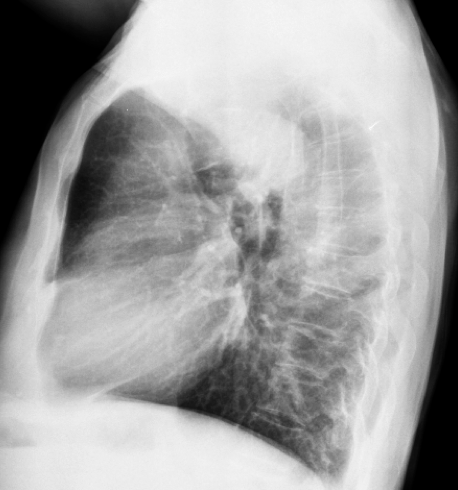
What do you think?
Click here for the answer
Solution:
The main finding in both PA and lateral chest radiographs was very well described by Marcos Mestas. The trachea is displaced to the right in the PA image (blue arrow) and the space behind the trachea, the so called retro tracheal space is occupied. (yellow arrow).
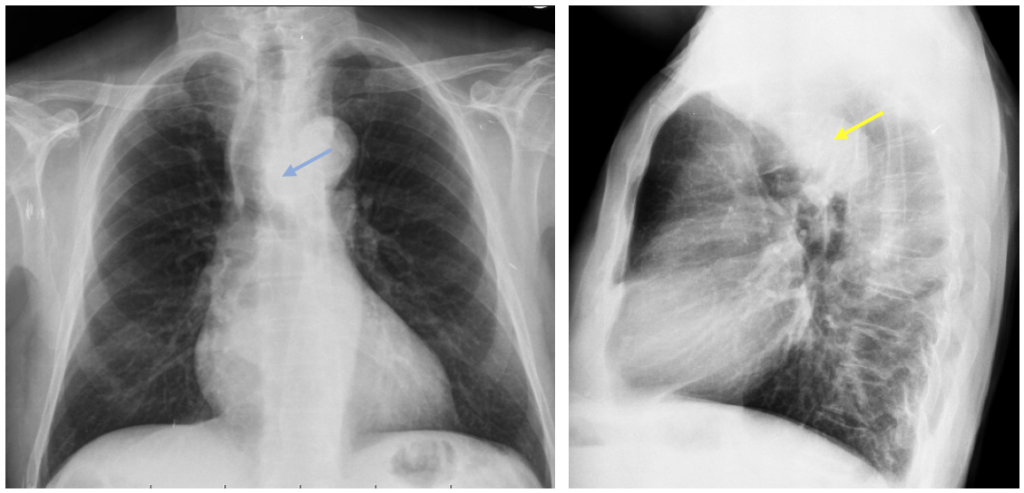
With these findings a suspicion is raised of mediastinal pathology, and CT should follow.
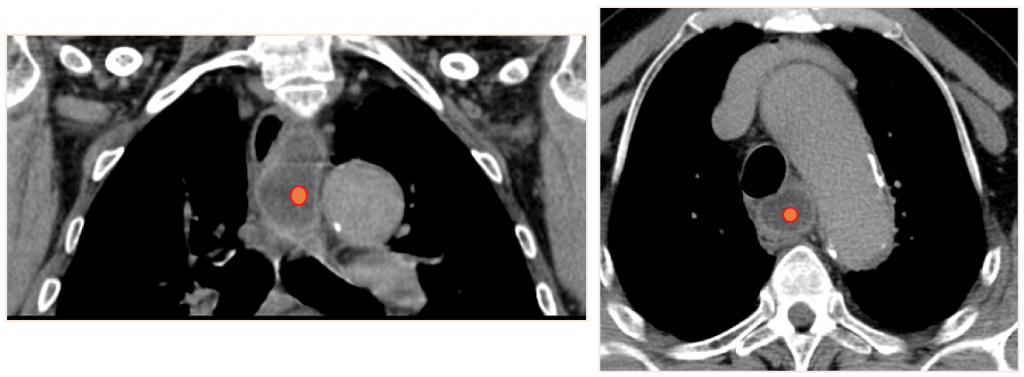
CT (Non contrast due to renal problems): A fluid collection with a thick wall is identified between the trachea and the oesophagus. (red dot).
Putting together the clinical history of recent neck surgery and the findings of a collection in the vicinity of trachea and oesophagus the diagnosis was of a Mediastinal abcess.
You must remember that the Mediastinum is connected to the neck and therefore tumoral and infectious processes may “migrate” downwards thanks to this pathway and to gravity.
This patient was treated with antibiotics and a post treatment CT showed that the collection had disappeared as you can see in the following images.
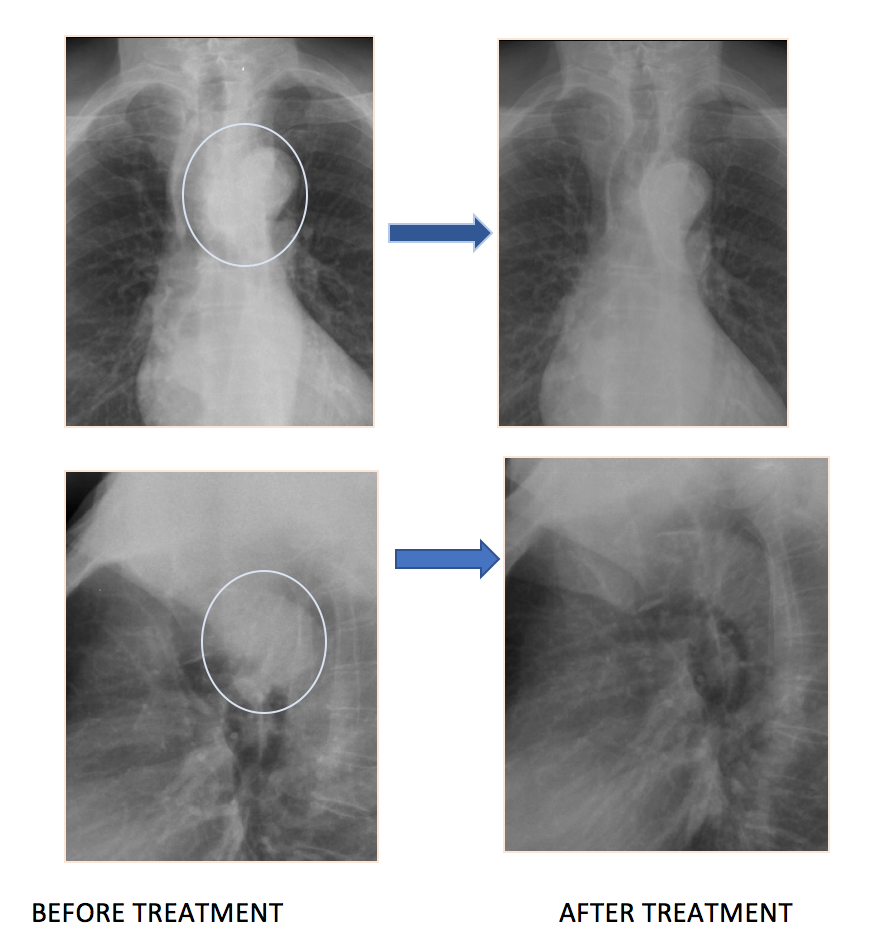
Points to remember.
- Look for subtle findings in the mediastinum in PA and lateral chest radiographs and remember the retro tracheal space.
- Cervical pathology may extend to the mediastinum helped by gravity.
Here is an excellent reference from my good friends Dr. Tomás Franquet and colleagues.










There is a left paratracheal soft tissue mass with extension to the aorto-pulmonary window that desplaces the trachea to the right. It coudl be an hematoma related to the surgery. An another guess may be an aortic aneurism
accessory lobe